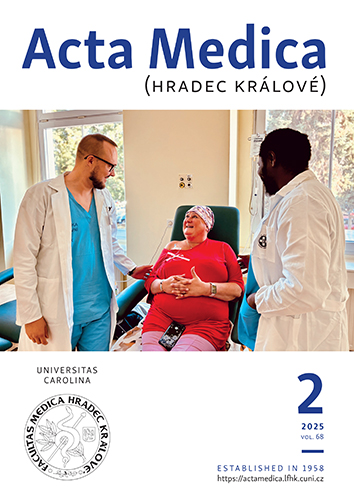ACTA MEDICA, Vol 56 No 2 (2013), 67–72
Results of Treatment of Periprosthetic Femoral Fractures after Total Hip Arthroplasty
Martin Korbel, Pavel Šponer, Tomáš Kučera, Egon Procházka, Tomáš Proček
DOI: https://doi.org/10.14712/18059694.2014.26
published online: 23. 07. 2015
abstract
Periprosthetic fractures are the third most common reason for revision total hip arthroplasty. Surgical treatment of periprosthetic fractures belongs to the most difficult procedures due to the extensive surgery, elderly polymorbid patients and the high frequency of other complications. The aim of this study was to evaluate the results of operatively treated periprosthetic femoral fractures after total hip arthroplasty. We evaluated 47 periprosthetic fractures in 40 patients (18 men and 22 women) operated on between January 2004 and December 2010. The mean follow-up period was 27 months (within a range of 12–45 months). For the clinical evaluation, we used modified Merle d’Aubigné scoring system. In group of Vancouver A fractures, 3 patients were treated with a mean score of 15.7 points (good result). We recorded a mean score of 14.2 points (fair result) in 6 patients with Vancouver B1 fractures, 12.4 points (fair result) in 24 patients with Vancouver B2 fractures and 12.7 points (fair result) in 7 patients with Vancouver B3 fractures. In group of Vancouver C fractures, we found a mean score of 16.2 points (good result) in 7 patients. Therapeutic algorithm based on the Vancouver classification system is, in our opinion, satisfactory. Accurate differentiation of B1 and B2 type of fractures is essential. Preoperative radiographic images may not be reliable. If in doubt, checking the stability of the prosthesis fixation during surgery should be performed.

Results of Treatment of Periprosthetic Femoral Fractures after Total Hip Arthroplasty is licensed under a Creative Commons Attribution 4.0 International License.
210 x 297 mm
periodicity: 4 x per year
print price: 150 czk
ISSN: 1211-4286
E-ISSN: 1805-9694
